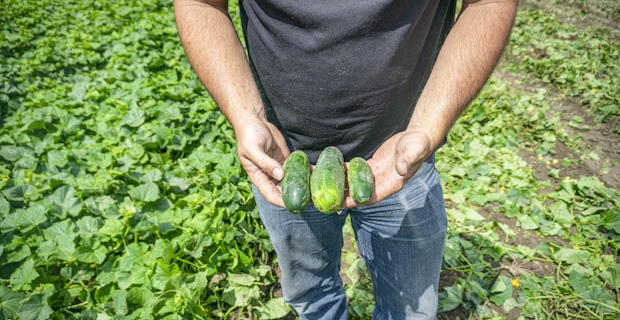
Skagit Farmers Supply

Simplifying organic certification audits

Skagit Farmers Supply
Managing crop rotations
The Skagit Valley is famous for its annual Tulip Festival held in April each year, and the fact that tulips can be grown in this area certainly is a testament to the favorable growing climate and fertile soils. Skagit Farmers Supply has helped growers achieve the best results in these soils since 1937, servicing Skagit, Snohomish and Whatcom counties through different locations that offer agronomy services, input sales, applications and a range of other services and products. Many different crops can be grown in the Skagit Valley says Skagit Farmers Supply Location Manager Jay Renwick: “Fresh-market potatoes are the money crop around here, both reds and yellows, but we also grow corn, pumpkins, seeds crops, grass for hay, raspberries, cucumbers and many other crops around here.”

With growers only able to plant potatoes in the same field every third year because of disease management, crop rotations are naturally very important here, forcing growers and agronomists to work closely together according to Skagit Farmers Supply agronomist Jon Jarvis: “With the fertilizers and chemicals that we use on our fields, we always have to be mindful of which crops we’re planning to grow in the coming years as well so that we don’t get any negative effects down the line. Potatoes are the cash crop for most growers however, so we keep that in mind when selecting the other crops we plant between potato crops; we need to make sure we help growers maximize their income, which requires us to think about more than just the current season.”
Jon continues: “Agworld really helps us when it comes to rotational planning. As we’ve used Agworld for four years already in our organization, I can now look back on those four years of historical data when making decisions. This helps us learn from the results we achieved in the past and allows us to improve even more going forward. Agworld is also very useful when I have to consult on a new farm because a colleague left for example - no need to ask the grower a lot of questions or try to find things out the hard way; everything I need to know is right there available for me in Agworld.”

Organic certification audits
Growers throughout the Skagit Valley, like many other growers in the USA, are getting increasingly more pressure from their clients to grow more organic crops, explains Jay: “Large retailers such as Costo or Walmart are now mandating that growers produce a certain percentage of their crops organically. They basically say: ‘if you want us to buy your conventional potatoes you also have to produce 20% organically’ - with that percentage changing, depending on the crop. This makes it very important for growers to be organically certified and get audited each year, which is where Agworld is very important for both us and our growers.”
Jon adds: “Growers that use any part of their fields for the production of organic crops have to pass an OMRI (Organic Materials Review Institute) audit each year. This means that they have to prove that they’ve only used products on these fields that are approved by the OMRI. Because we do all our planning and recommendations in Agworld, it’s easy for us to print a nice book with all information of what we’ve done throughout the season and send that off.”

Jon continues: “Our growers’ OMRI auditors have really liked getting the Agworld input report as it shows everything they need right there in one report. I feel that this is a big benefit that Agworld offers ourselves and our growers: they help us make these organic audits quick and simple. Because the auditors can see everything we’ve done for that year in the Agworld report, they know exactly which applications we’ve made. I’ve had a lot of positive feedback from my grower clients on us helping them with this process through Agworld.”
Streamlining internal processes
Within the Skagit Farmers Supply organization, it’s not only the agronomists using Agworld, but the applicators utilize Agworld as well in order to collaborate with both agronomists and clients says Jay: “Agworld streamlines our operation and makes us more efficient as it forms the ‘bridge’ between the agronomist making a recommendation and the application side fulfilling these recommendations. Because we use Agworld as our means of communication here, we minimize the risk that mistakes are made.”

Jay continues: “Our applicators know exactly whether they are in the right field or not as the fields are all mapped in Agworld and it shows their position relative to the field boundary in Agworld. If they have a question about the product or rate of application, everything is right available for them in Agworld to answer that question. Because of Agworld, we don’t have nearly as many wrong field, wrong rate or wrong product issues. And, as soon as an application is finalized, it goes straight from Agworld to billing so that our billing department often has the billing done that same day or the next morning - that’s some great efficiency for us!”
Jon adds: “I started with Skagit as an applicator and so I’ve seen first-hand how Agworld helps our applicators with its ease-of-use. Our applicators range in age from 20 up to 60 years old and all of them have talked about how easy Agworld is to use. We even have a 67 year old colleague who plants and side-dresses corn for us and even he uses Agworld and enters actuals - which shows you how user-friendly, intuitive and easy-to-use the Agworld app is. From my experience, all the agronomists and applicators within Skagit Farmers Supply really like using Agworld!”
"Our growers’ OMRI auditors have really liked getting the Agworld input report as it shows everything they need right there in one report. I feel that this is a big benefit that Agworld offers ourselves and our growers: they help us make these organic audits quick and simple."Jon Jarvis Agronomist, Skagit Farmers Supply.
